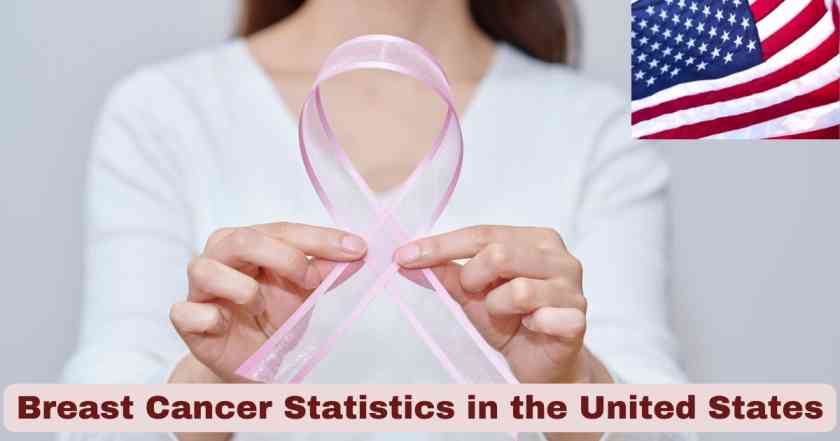Breast Cancer in the U.S.
Breast cancer remains the most commonly diagnosed cancer among women in the United States and one of the leading causes of cancer-related deaths. It affects hundreds of thousands of women each year across all racial, socioeconomic, and age groups, though the risk increases significantly after age 40. Despite significant advances in medical research, treatment options, and screening methods such as mammography, the burden of the disease continues to be substantial. The American healthcare system has made strides in early detection and public awareness, but disparities in access to care, diagnosis timing, and outcomes still persist, especially among underserved populations.
What makes breast cancer particularly complex is its variability—it can range from slow-growing, highly treatable tumors to aggressive, fast-spreading forms. Trends over the past decade show improvements in survival rates, particularly for localized-stage diagnoses. However, late-stage breast cancer cases remain challenging, with significantly lower survival rates. Ongoing public health efforts now focus not only on improving early detection but also on increasing health equity, encouraging lifestyle changes to reduce risk, and supporting patients through survivorship. Understanding the current landscape of breast cancer statistics—incidence, mortality, stage at diagnosis, and survival—helps highlight where progress has been made and where critical work still lies ahead.
Breast Cancer in the U.S. (2022–2023): New Cases and Deaths
| Metric | Number |
|---|---|
| New Breast Cancer Cases (2022) | 279,731 |
| Breast Cancer Deaths (2023) | 42,213 |
In 2022, the United States recorded 279,731 new cases of female breast cancer, making it the most common cancer among women nationwide. This high number reflects several intersecting factors: a large aging population, increased awareness and access to screening, and enhanced reporting. However, it also indicates that despite preventive efforts, the disease burden remains substantial. Lifestyle factors such as obesity, physical inactivity, alcohol use, and delayed childbirth, alongside genetic predispositions like BRCA mutations, continue to contribute to these numbers. This necessitates more robust public health policies focused not just on detection, but on modifiable risk factors.
By 2023, 42,213 female deaths were attributed to breast cancer, highlighting that while survival has improved, mortality is still a major concern. This suggests gaps in access to early detection and quality treatment, particularly among marginalized communities, including low-income populations and racial minorities. Regional disparities also play a role—women in rural or underserved areas often have delayed diagnoses and limited access to oncology care. These figures underscore the importance of health equity, insurance coverage, culturally tailored education campaigns, and continued investments in both research and clinical innovation to reduce preventable deaths.
Breast Cancer in the U.S. (2022): Age-Adjusted Incidence & Death Rates
| Gender | Incidence Rate | Death Rate |
|---|---|---|
| Female | 132.9 | 18.6 |
The age-adjusted incidence rate of 132.9 per 100,000 females in 2022 offers a standardized way to compare the burden of breast cancer across age groups and regions. This metric smooths out population age differences, giving a clearer picture of risk. A rate this high points to the success of increased screening efforts, especially through routine mammography, but also suggests that significant numbers of women continue to develop the disease. Increased longevity and lifestyle risk factors also contribute to this sustained incidence rate. Importantly, screening doesn’t prevent cancer—it detects it early, which explains why incidence remains high despite more outreach and preventive messaging.
The death rate of 18.6 per 100,000 is much lower than the incidence rate, demonstrating that most women diagnosed with breast cancer survive—especially when caught early. However, this should not lead to complacency. This figure varies widely depending on race and geography; for example, Black women, while slightly less likely to develop breast cancer than White women, are significantly more likely to die from it. Such disparities are driven by a mix of socioeconomic inequalities, healthcare access, cultural barriers, and systemic bias in medicine. Addressing these disparities is critical to achieving equitable cancer outcomes for all populations.
Breast Cancer in the U.S. (2018–2022): Stage at Diagnosis
| Stage | Percentage |
|---|---|
| Localized | 66.5% |
| Regional | 25.2% |
| Distant | 6.0% |
| Unknown | 2.3% |
Between 2018 and 2022, 66.5% of breast cancer cases were diagnosed at the localized stage, meaning the cancer was still confined to the breast. This is a positive trend and a testament to the effectiveness of early detection methods like regular mammograms. Early-stage diagnosis generally leads to less aggressive treatment, lower costs, and vastly improved survival outcomes. It also reflects an increased public awareness of breast health and the effectiveness of national screening programs. However, not all women have equal access to such services, and some cancers grow aggressively between screenings—highlighting the need for personalized screening strategies.
On the other hand, 25.2% of cases were found at the regional stage, where the cancer had spread to nearby lymph nodes or tissues, and 6.0% were distant, meaning it had metastasized to other organs. These later stages are associated with worse outcomes and more intensive treatment. The 2.3% classified as “unknown” likely result from incomplete medical records or delayed diagnosis and treatment. These numbers underscore the need for improving timely diagnosis through better access to care, patient navigation programs, and advanced imaging technologies. Improving health record systems and encouraging follow-up in underserved populations could also help reduce the percentage of unknown-stage cancers.
Breast Cancer in the U.S. (2015–2021): 5-Year Relative Survival Rates
| Stage | Survival Rate |
|---|---|
| Overall | 91.6% |
| Localized | 99.6% |
| Regional | 86.6% |
| Distant | 32.9% |
| Unknown | 69.8% |
The overall 5-year relative survival rate for female breast cancer patients in the U.S. between 2015 and 2021 was an encouraging 91.6%, which speaks volumes about the progress made in cancer care. When diagnosed at the localized stage, the survival rate soars to 99.6%, meaning nearly all women survive at least five years post-diagnosis. This emphasizes the life-saving potential of early detection and treatment. Thanks to innovations in surgical techniques, targeted therapy, hormone therapy, and radiation oncology, localized cancers are more curable than ever. Mammography remains the gold standard for finding tumors before they can be felt or cause symptoms.
However, the prognosis drops significantly for women diagnosed at later stages. The 86.6% survival rate for regional-stage cancers is still relatively good but requires more aggressive treatment. The distant-stage survival rate is only 32.9%, indicating the challenges of treating metastatic breast cancer. This data underscores the importance of early diagnosis, consistent follow-up, and perhaps even future advances in liquid biopsy and AI-powered diagnostic tools. The 69.8% rate for unknown-stage cancers suggests that even when clinical staging is incomplete, outcomes can be mixed, pointing to the need for comprehensive medical documentation and timely intervention. Ultimately, survival is stage-dependent, and early action saves lives.
Disclaimer: We admit that despite our best efforts to publish information accurately, we are unable to independently confirm all the information contained in this report. The information displayed here is based on data gathered from numerous sources. We disclaim all responsibility for any mistakes, monetary loss, or other damages of any kind that could be caused by using or relying on the information provided here.







